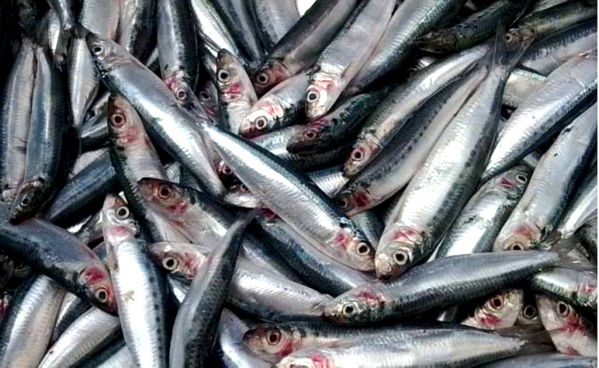Torrential rains, floods, and blackouts may have been battering the city of Zamboanga but it did not dampen the spirit of the festivities of the Sardines Festival 2014. As a cue to the celebrations ahead of the day, the toll of wooden beaters on the gong and kulintang echoed clearly on the gymnasium of the Western Mindanao State University (WMSU).

Once inside the gymnasium, all of the gloom of the weather outside dissipated because of the venue’s bright colors patterned on Zamboanga’s icon, the vinta. Government officials and students from WMSU and other schools filled the seats of the gymnasium, ready for the two-day activities ahead of them. With the excellently designed venue, it was hard to think that the WESMARRDEC and its partners have organized this event in a short amount of time!
The theme of the Sardine Festival, “Sardinas: El Mas Barato y Rico Protina Comida Para Di Juan” or translated to “Sardines: The cheapest food rich in protein for Filipinos” aimed to create appreciation of sardines among the youth and help ensure the sustainability of sardines.
The program kicked off with the speeches delivered by the city mayor, Ma. Isabel Climaco-Salazar; PCAARRD Executive Director, Dr. Patricio Faylon; Bureau of Fisheries and Aquatic Resources (BFAR) Director, Atty. Asis Perez, and the representative of the office of Senator Cynthia Villar, Atty. Rhaegee Tamanya. Almost all of the speeches highlighted the most urgent need of the city: to save sardines and increase supply for its community. Mayor Climaco-Salazar also posed the challenge of the sardine industry to the students, asking “Why is it that we have 12 canning industries and the jobs are available; but the young people of Zamboanga City are not taking on the challenge of these jobs?”
The goals of the industry and the goal of increasing sardine production cannot be achieved without taking the right action and so the “Pangako sa Dagat” pledge wall was unveiled, inviting each of the attendees to commit their pledge in conserving the Sulu Celebes Sea. This signaled the formal opening of the exhibit and the start of the two-day festival.
What is sardine for the youth?
The spotlight was not only focused on government officials but also on the Zamboangeño youth, who displayed their skills and talent in six contests covering elementary to college student divisions. The goal was to drive appreciation of sardines among children and the general public by making the fish flexible and innovative for Filipinos. Currently, Zamboangeños and Filipinos all over the country regard sardine as a poor man’s meal due to its affordable price.
The contests included poster-making and slogan-making that allowed students to demonstrate their creativity. The theme for both of these contests was “Conservation and better management of sardine.” Performing arts and quick thinking of students were tested during the interschool dance theater presentation and the quiz contest.
It’s not just the students who were put in the spotlight but even photographers from all over Zamboanga as they displayed their prowess in photography. Lastly, university students whipped out creative and delicious creations through an interschool culinary contest.
Helping the community overcome challenges
There’s also a time to be serious amid the fun and festivities of the two-day sardine festival. The event also became a venue to tackle important issues among the community such as the three-month fishing ban, which cripples the livelihood of fishermen in Zamboanga city. To help address this, DOLE and BFAR gave an orientation to fisherfolks about the sardine closed season and alternative livelihood.
DOLE presented the DOLE Integrated Livelihood and Emergency Employment Programs or DILEEP, which has the goal to generate jobs and reduce poverty through transitional emergency employment and promotion of entrepreneurship and community enterprises. On the other hand, BFAR presented its initiatives in assisting fisherfolks with their fishing gears and paraphernalia, distribution of different farm inputs such as seaweed seedlings and fingerlings, establishment of post-harvest facilities, and the availability of trainings and technical assistance for fishers.
The two-day Sardine Festival capped off with a closing program opened by the WMSU Grand Chorale singing songs about Zamboanga in Chavacano, followed by the WMSU dance troupe performing both folk and Spanish-influenced dances. Acknowledgements and thanks were said from the speeches of officials of the WMSU, WESMARRDEC, Southern Philippines Deep-Sea Fishing Association (SOPHIL), and BFAR. Afterwards, awards were given to the winners of the contests, to the delight of the students in the WMSU gym.
The Sardine Festival was truly a productive event, with students, government officials, and the community of Zamboanga learning the importance of sardines and how it can be sustained. WESMARRDEC will just hope that the information it provided through the successful FIESTA will be retained with the community so that they can carry out the needed action in the years to come.
The barangay captain of Cawit, Rey Modillas, summarized the essence of the event by saying, “The waters surrounding Zamboanga Peninsula are rich in marine life, supplying the people with fish – and so we have the sardines. Let’s ponder and give serious thoughts on [its] abundance and our abuse. By divine providence, we are enjoying the multiple blessings and by way of faithfulness, each one of us must have the sense of responsibility.”

